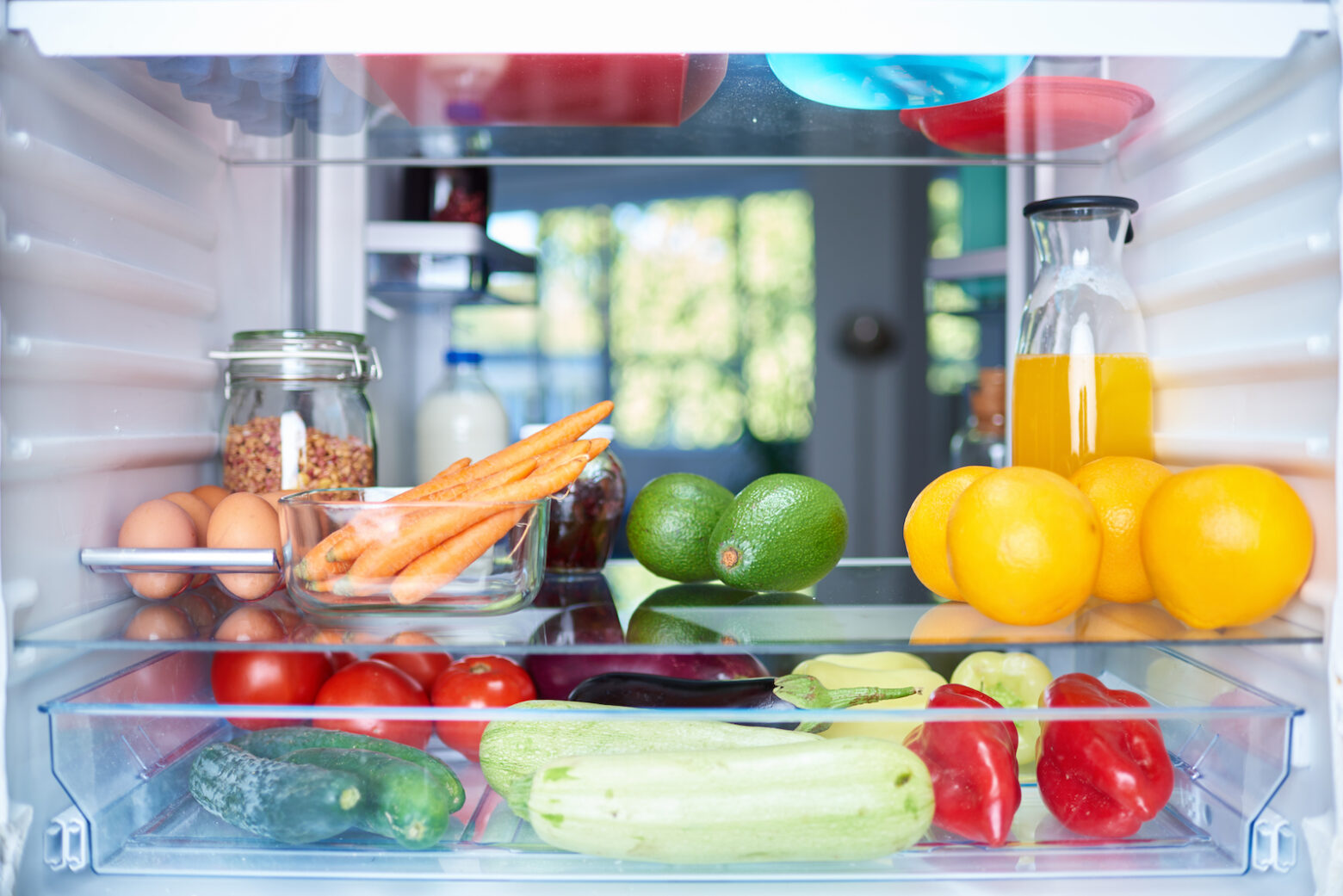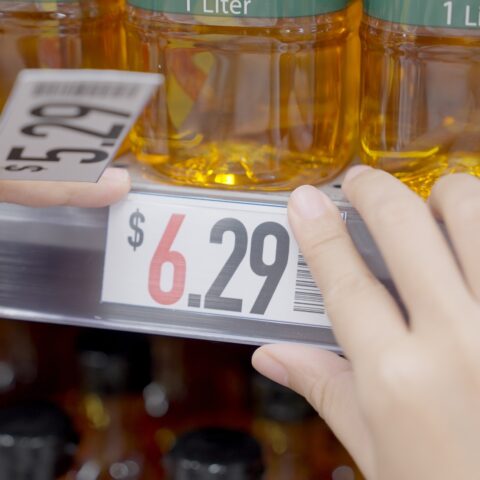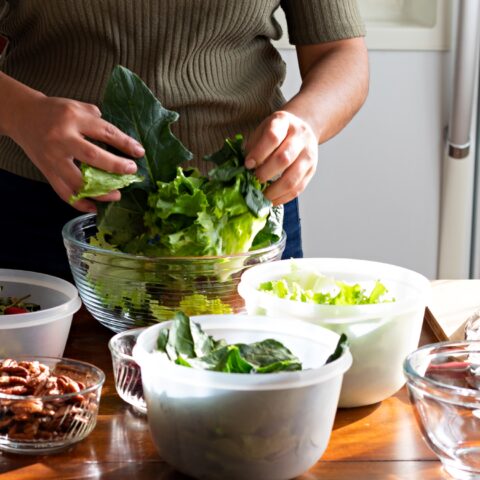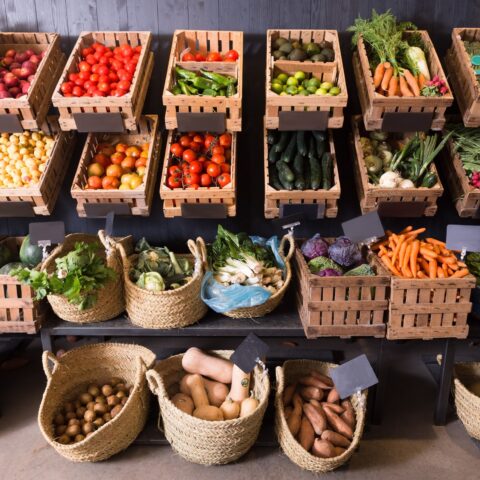To Improve Your Diet Quality, Consider Your Fridge and Pantry

The Paleo Diet is a great way to improve your diet quality, and one of the tips we offer newcomers to The Paleo Diet is to transition gradually to this way of eating. One of the best ways to transition to healthier eating is by taking a few minutes to just consider what foods are in your kitchen today. In this guide, we offer a way to improve your diet quality with a few simple ways of looking at your refrigerator and your pantry. By intentionally considering what’s inside — and comparing it with your goals — you can take simple, painless steps toward feeling better and performing better.
Let’s consider your diet quality through a gap analysis. A gap analysis simply compares:
- Where am I now?
- Where do I need to be?
- How am I going to get there?
The first question, then, is the same as in any gap analysis: Where am I now?
Step 1: The Fridge and Pantry Test
Try this revealing quiz: Write down from memory what foods you have at home. Your goal isn’t a comprehensive list of everything in your kitchen, but the items you recall using this retrospective assessment can tell you a lot about your habits.
Next, go for a look around your kitchen. Check out the fridge, the pantry, and any other go-to areas. What do you see? Literally open your fridge and take a look inside.
Take this opportunity to answer the questions below:
- What do you immediately see when you open the door of your refrigerator?
- What’s front and center in your line of sight?
- What foods or products are the most easily accessible?
- Are there items hidden in the back that get “lost” easily?
Next, do the same thing in your pantry. Look at the most readily available foods. What’s within line-of-sight and easy arm’s reach?
Now think about these questions:
- What is missing? What is NOT easily accessible?
- What are the foods you prefer? Are they present and easily accessible?
- What are the foods you dislike and where are they located?
Step 2: The Kitchen Work Triangle
Next, let’s borrow a home-design concept: “the kitchen work triangle.” This method of organizing your kitchen helps optimize the workflow for preparing food.
The work triangle helps plan out efficient kitchen workspaces with clear traffic lanes. Imagine a triangle that connects your cooktop, your sink, and the refrigerator and pantry. This is the work triangle.
In your home (or office), are any of these isolated? Which are closest? How does this affect how you prepare meals? Are there cooking styles you avoid because items feel too far apart? What can you move to make your kitchen work triangle better for you?
Step 3: Assess Your Nutrition Knowledge
The next step is to consider what you know about healthy nutrition. Since you’re visiting The Paleo Diet website, I bet you care about your health and know that nutrition is important to your health. I bet you have some interest in nutrition and maybe some opinions on what foods are healthy and which are not. We are here for you!
Consider these questions:
- What are your go-to sources for carbohydrate, protein, and fat?
- Specifically, figure out a top-three list for each nutrient.
- How do your work and your life schedule make it easier or harder to eat healthy foods?
- How would you describe your current eating habits? Healthy? Not that healthy?
- What are your main hurdles to eating better?
- What support do you have in eating healthier? Are your friends and family healthy or unhealthy eaters?
Bringing Steps 1-3 Together
I’ve worked through the gap analysis, goal setting, and nutrition planning process with hundreds of people in my career as a sports nutritionist. That experience has helped me identify patterns and pitfalls. Now I’d like to share some insights that may help you apply this process to your nutrition goals.
Let’s start by looking at student-athletes, a group that often experiences real challenges to healthy eating. When we review the questions above, I see these key points:
- Students tend to eat the same foods over and over. That gives them an excellent opportunity for improvement simply by diversifying their menu.
- Students are often so busy they do not prioritize eating well. Getting ready for school, going through a full day, getting to practice or other extracurricular activities, and then getting home for dinner and homework can quickly swallow an entire day. Nutrition is often an after-thought.
I also work with adult athletes who have built up a solid understanding of healthy eating practices, but they strive to eat only what they consider “healthy/clean” foods. This can limit the range of foods they eat and that can sometimes mean not eating enough food to perform well in sports or life. This group of athletes often feel as if they are unable to include certain energy-rich fuel sources (e.g., grains) that are necessary to support their training. They may consume a lot of low-calorie vegetables (great for health!), but in so doing they miss on the total energy intake they need (not great for training!). With these adult athletes, I try to transform their thinking:
- Eat Paleo as much as you can, but whatever you do, don’t eat too little. Think of food as fuel. What you eat is important, but you also need to eat enough. Dr. Lorden Cordain’s book The Paleo Diet for Athletes with Joe Friel lays out a good template to healthier eating for athletes.
These simple changes in approach can make a big difference.
Step 4: Create a Healthier Nutrition Plan
Now that you’ve taken stock of you pantry and fridge, considered your kitchen layout, and thought about your healthy eating challenges and support network, it’s time to make a plan to improve your diet quality.
And that’s what The Paleo Diet is all about. Here are some resources to help you get moving in the right direction:
How to Go Paleo: A basic, 10-page guide to trying out The Paleo Diet for the first time. Includes how to shop, what to expect, and lots of starting points.
The Official Paleo Grocery List: Our printable list for trips to the store or to help with online grocery orders
7-Day Paleo Meal Plan: Test out your kitchen work triangle with this free downloadable pdf (ideal for use on a tablet). Includes meal ideas and step-by-step recipes.
What to Eat This Week: Follow this series for a full year of weekly meal ideas.
How to Practice The Paleo Diet: A more in-depth look at ways to transition onto a healthier diet with weekly guides for newcomers and experienced Paleo eaters.
Ryan Kohler
Ryan Kohler holds a B.S. in exercise science, an M.S. in sports nutrition, and has been published in numerous scientific and popular media outlets.
More About The Author




